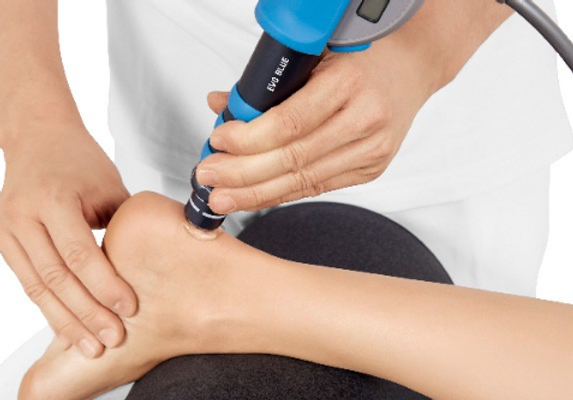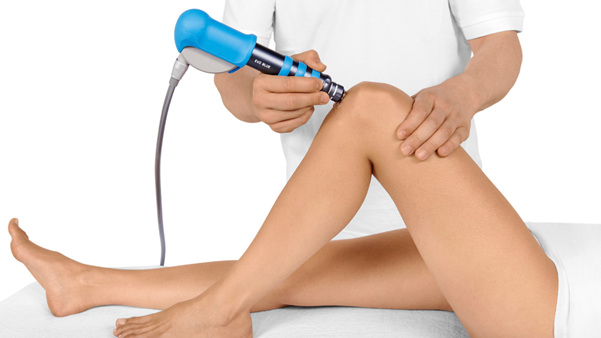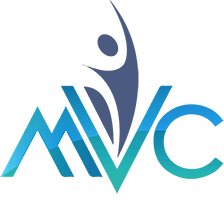Wave Therapy at MVC Health Fort Lauderdale
Shockwave therapy is a non-invasive treatment that stimulates the body’s natural healing process. It can relieve pain and promote healing of injured tendons, ligaments, and other soft tissues. It accomplishes this by releasing growth factors in the injured tissue. Shockwave therapy is sometimes referred to as EPAT, or extracorporeal pulse activation technology.
Shockwave therapy is a type of regenerative medicine (also known as an orthobiologic therapy). It is used to treat tendinopathy as well as difficult-to-heal ligament injuries. Some degenerative tendinopathies have an associated buildup of calcium in the tendon. Focused shock waves can break those deposits up.
The treatment can also promote healing after orthopedic surgery — for instance, if a hip has damaged tendons and ligaments around the hip. Surgery may correct the hip impingement, but after years of overworking and degeneration because of the impingement, the surrounding tendons often remain painful. Shockwave therapy can be used to address this secondary issue.
What injuries can be treated with shockwave therapy?
Shockwave therapy is used to reduce pain and promote healing from tendinopathy and many other sports injuries. Some examples include:
- foot pain: plantar fasciitis and Achilles’ tendinopathy
- Achilles' tendinopathies
- knee pain: patella tendinopathy (jumper’s knee)
- leg pain: hamstring injuries
- hip pain: rectus femoris and lateral hip pain with gluteal tendinopathies
- elbow pain: Little League elbow and tennis elbow
- shoulder pain: rotator cuff injuries


How does shockwave therapy work?
Shockwave therapy is typically administered by a sports medicine physician or athletic trainer with a physician’s supervision. An athlete’s doctor typically has a detailed understanding of their health history. Athletic trainers have deep knowledge in the anatomy of joints, tendons, and ligaments and common patterns of sports injury.
During treatment, the clinician holds a shockwave device next to the skin. The device sends shockwaves into the injured tissues, stimulating increased blood flow and growth hormones to the area, promoting new tissue growth.
There are two types of shockwave therapy. Usually, patients receive both types:
- Focused shockwave therapy sends waves into a small area.
- Radial shockwave therapy delivers shockwaves over a broader area, for instance, along the length of an injured tendon.


Is shockwave therapy painful?
Most patients report some discomfort during shockwave therapy, but most do not find it painful. The amount of discomfort depends in part on the person, their injury, and whether the damaged tissues are close to a bone. (Treatments delivered closer to a bone are generally more uncomfortable.) The clinician will rub a topical gel on the skin to reduce the discomfort. As soon as the treatment is over, the discomfort typically stops.
How long does shockwave therapy take?
A single treatment usually takes between 15 to 20 minutes. Depending on the injury, a patient will usually receive three to five treatments over a period of several weeks.
How effective is shockwave therapy?
Sports medicine specialists at Boston Children’s and other centers have observed significant healing in many of their patients who receive the treatment. Studies are currently underway to better understand the effectiveness of shockwave therapy.
It is important for patients to know that the results of shockwave therapy may not be apparent immediately but should increase over time as their injured tissues heal.
Shockwave therapy is often used in combination with other therapies such as physical therapy and platelet rich plasma injections. In the case of sports-related injuries, an injury-prevention specialist may work with the athlete to analyze their movement patterns and help them build strength and adjust their technique, so they are less prone to re-injury.
How long is the recovery period from shockwave therapy?
Athletes can typically return to activity within 24 hours of a treatment.
Are there any side effects or complications?
Complications of shockwave therapy are quite rare; however, it is important that a physician assess the patient’s injury and health before treatment begins. If a tendon or ligament is almost fully torn, shockwave therapy could cause the remaining tissue to tear. If a patient has significantly low bone density (osteoporosis), shockwave therapy could cause a stress fracture.
How we approach shockwave therapy at Boston Children’s Hospital
Shockwave therapy is part of the extensive sports medicine and injury prevention services available through Boston Children’s Sports Medicine Division and Sports Ultrasound Clinic.
Our sports medicine specialists take time to understand the underlying source of each patient’s injury so they can recommend the best treatment, starting with the least invasive approach possible. Depending on the athlete and their injury, we may suggest shockwave therapy alone or in combination with other therapies, including physical therapy and platelet-rich plasma (PRP) injections.
We also work closely with the injury prevention specialists at The Micheli Center for Sports Injury Prevention to help our patients return to sport stronger and less prone to injury than they were before. Our athletic trainers work with athletes analyze and correct athlete’s movement patterns and help them build strength in key areas to reduce their risk of future injuries.
If an injury is serious or does not improve after conservative treatment, our team of orthopedic and sports medicine surgeons have deep experience operating on sports injuries in children, adolescents, and young adults.
We currently offer shockwave therapy in our Boston, Peabody, North Dartmouth, and Weymouth locations.
WHAT PATIENTS ARE SAYING
"My Vivace treatments left my face feeling energized and looking awesome. Lines decreased, and my skin remains tight and clear; and it is almost one year later. Thank you Vivace!"
—Gini Silva
"I was excited, especially after seeing the measurable difference from the first treatment. Like many women, I examine my reflection with a hypercritical eye. The first treatment yielded a great surprise in a visible reduction in the vertical crepe-y lines on the front of my throat. Plus, my overall face felt extra firm, and my skin color looked more even. After my second treatment, I was excited to wake up and look in the mirror! My throat and jaw look amazing! Such a bonus since I thought surgery was the only way to correct my jaw line and neck. It is a genuine improvement, and I haven’t even gone halfway through the treatment cycle yet. My deepest laugh lines are much more superficial. I don’t mind being a 53-year-old woman, but I want to look as good as I feel. It is coming true right before my eyes."
—Lucia Burns
"I’m glad I chose Vivace! I was a little nervous as friends have had pain during other kinds of microneedling treatments, but I found this treatment to be a breeze. On a scale of one to ten, I was at a one during the majority of the treatment. I was blown away how little I felt. One hour later, fine lines appeared to be diminished, my lips had a nice, little pout and I was ready to get back to my day and see people with no makeup on. The tightening made me feel great about myself. I plan to do a series of three, and I can’t wait for the next one!"
—Renee Dee
WHAT DOES THE VIVACE EXPERIENCE® FEEL LIKE?
Most physicians use a topical numbing cream to make the treatment comfortable. The majority of patients describe a feeling of light pressure with an occasional warming sensation. Other patients report a feeling of minor prickling.
DOES MICRONEEDLING HURT?
Patients should experience minimal pain during the Vivace® treatment. Typically, a numbing cream is applied 30 to 45 minutes before the treatment to ensure a comfortable patient experience. Many testimonials from patients say they found the treatment to be in a range of comfortable to virtually pain-free. The Vivace® Microneedle RF was designed with patient comfort in mind.
HOW DO I DETERMINE THE RIGHT TREATMENT FOR ME?
If you are considering a cosmetic skin treatment, you should reach out to one of our physicians or aesthetic providers for a consultation. It’s important to work with a trusted provider who uses FDA-cleared devices like Vivace® to give you confidence in your treatment’s safety and reliability. You should seek a patient experience designed to be comfortable while providing great results.
RF microneedling is only part of the process. The right serums and recovery system will enhance your results by improving your skin tone and texture. These serums and procedures are available through our physicians and aesthetic providers.


This treatment is a literal game changer for treating fine lines and texture.
The Vivace® Microneedle RF device is the newest generation of radiofrequency microneedling and is FDA-cleared for your safety. This minimally-invasive treatment stimulates the natural production of collagen and is shown to be effective in alleviating facial wrinkles, fine lines, and tightening and toning the face and neck."
"What’s the difference between microneedling with RF and traditional microneedling!???
The Vivace® Microneedle RF device contains 36 gold-tipped needles that deliver radio frequency energy at 31 depths of penetration to gently heat and tighten the skin. ?? The heat provided with a radiofrequency treatment stimulates collagen production, which is necessary for tight and youthful skin. ????"

